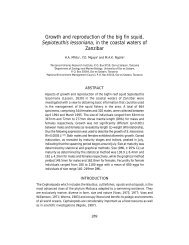gpa_east_africa_case.. - GRID Africa GeoPortal - UNEP
gpa_east_africa_case.. - GRID Africa GeoPortal - UNEP
gpa_east_africa_case.. - GRID Africa GeoPortal - UNEP
Create successful ePaper yourself
Turn your PDF publications into a flip-book with our unique Google optimized e-Paper software.
esulting from the continuation of the current practice of discharging untreated sewage fromdomestic and tourist sources into the rivers near and the sea. Without investment ininfrastructure, the increase of sewage from population and tourism growth will poseimmediate risks of fresh and sea water contamination, leading to infectious diseases throughthe water distribution system and the deterioration of sea water quality. Both will have directimpacts on tourism and indirect impact through increased health problems. With the project,these threats are expected to be removed, resulting in the following benefits:1. Direct benefits to 80% of the residential population of Beau Vallon who will be connectedto the sewage collection network by the year 2010, estimated at about 6,000 people orabout 1,330 households. This will eliminate the cost of regular removal of domesticsewage from the septic tanks and increase the supply of useable water for various uses.2. Direct benefits to property owners from higher real estate values, estimated at about1,555 housing units, about 363 ha of available building land (a third of the total vacantland) and about 132 tourist accommodation units.3. Direct benefits to the local tourism industry of Beau Vallon, presently comprising about1,500 beds and attracting about 43,000 visitors spending approximately 50.0 million US$.The planned pollution control investment will create benefits at l<strong>east</strong> equal to the avoidedlosses from tourism decline. The current growth trend in tourism is about 5% per yearwhich will not be maintained without sewerage infrastructure.4. Direct benefits to fisheries production, estimated at 1,100 tons a year that may beaffected by impacts to the near-shore marine environment.5. Indirect benefits from the preservation of the quality of the marine environment now understress from sewage discharges directly in the Bay or through the rivers of Sullivan andMare Anglaise.2. Cost-Benefit Valuation ApproachThe first step in the development of Cost-Benefit Analysis is to define the categories ofbenefits to be considered, the approach adopted for their valuation and the basic indicatorsguiding the monetary or qualitative estimation.Benefits fall into three categories: Direct use benefits, indirect use benefits and non-usebenefits.The following table explains the valuation approach to be followed. The valuation approach isthe link between environmental information concerning degradation impacts and theidentification of cost and benefit consequences. In other words, it guides the approach to theuse and interpretation of available environmental information to identify and valueenvironmental costs (from inaction) and environmental benefits (from taking proposedactions).An important clarification is needed. Benefits of environmental investment / measures areoften the avoidance of negative impacts made possible by investment. The present pollutionimpacts identified in the Case Study are the main source of benefits of the investmentconsidered. For example, loss of resource productivity for fisheries or mangroves or tourism,due to pollution is a cost, while the restoration of productivity and the avoidance of pollutioncosts is a benefit.Table 10: Classification of ValuesType of ValueValuation approach and indicatorsDirect Use ValueChange in the productivity (outputs) of activities using environmental resources, resulting fromchange in environment conditions / qualityTourismIndicator: Change in tourism revenues and avoided lossesFisheriesIndicator: Change in fisheries production and revenues and avoidedFinal Draft Report – Cost Benefit Case StudiesGPA Strategic Action Plan on Sewage, October, 200049


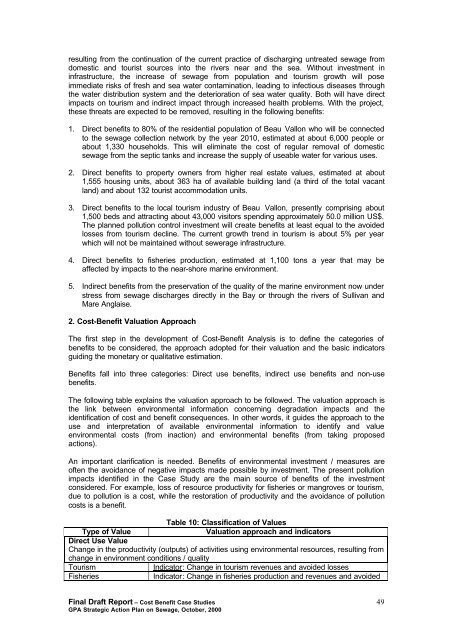
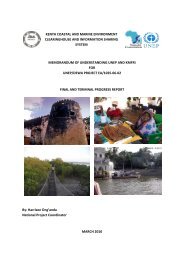
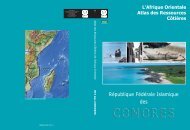
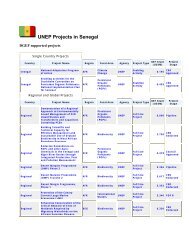

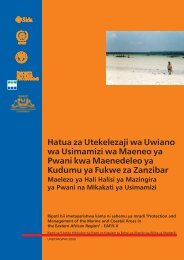
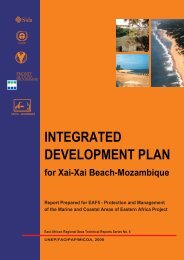
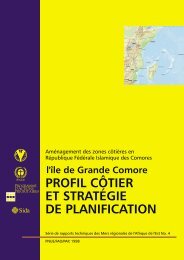
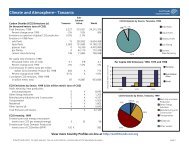

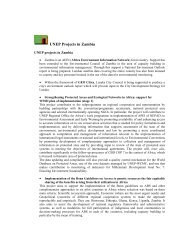
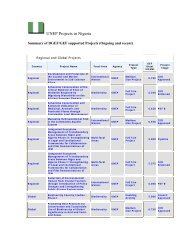
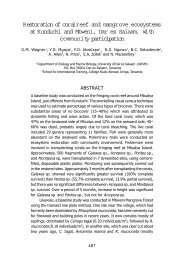
![Please Click to download [English] - GRID Africa GeoPortal - UNEP](https://img.yumpu.com/30633391/1/184x260/please-click-to-download-english-grid-africa-geoportal-unep.jpg?quality=85)
